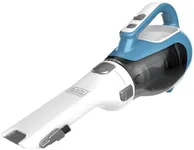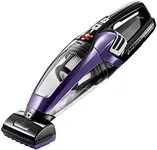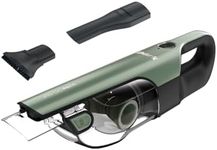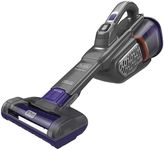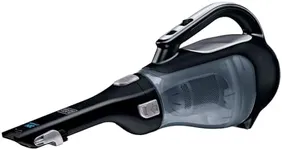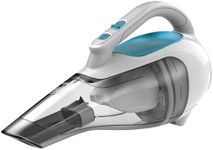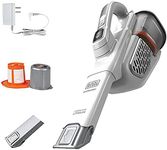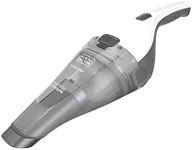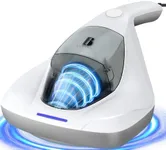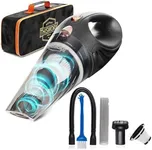Buying Guide for the Best Handheld Dustbusters
When choosing a handheld dustbuster, it's important to consider your specific cleaning needs and preferences. Handheld dustbusters are great for quick clean-ups, reaching tight spaces, and cleaning areas where a full-sized vacuum might be cumbersome. To find the best fit for you, focus on the key specifications that will impact the performance and convenience of the dustbuster. Here are the main specs to consider and how to navigate them.Suction PowerSuction power determines how effectively the dustbuster can pick up dirt and debris. It's usually measured in air watts (AW) or volts (V). Higher suction power means better cleaning performance, especially for heavier debris or pet hair. For light, everyday cleaning, a lower suction power might suffice, but for more demanding tasks, look for a dustbuster with higher suction power.
Battery LifeBattery life indicates how long the dustbuster can operate on a single charge. This is crucial for ensuring you can complete your cleaning tasks without frequent recharging. Battery life can range from 10 minutes to over 30 minutes. If you need the dustbuster for quick, small jobs, a shorter battery life may be acceptable. For larger areas or more extended cleaning sessions, opt for a model with longer battery life.
WeightThe weight of the dustbuster affects how easy it is to handle and maneuver. Lighter models are easier to use for extended periods and are more suitable for people with limited strength or mobility. Heavier models might offer more power but can be tiring to use. Consider your physical capabilities and how long you plan to use the dustbuster at a time when choosing the right weight.
Dustbin CapacityDustbin capacity refers to how much dirt and debris the dustbuster can hold before it needs to be emptied. Larger capacities mean less frequent emptying, which is convenient for bigger cleaning tasks. However, larger dustbins can also make the dustbuster bulkier. For quick, small clean-ups, a smaller dustbin might be sufficient, but for more extensive cleaning, a larger capacity is beneficial.
Attachments and AccessoriesAttachments and accessories can enhance the versatility of your dustbuster. Common attachments include crevice tools for tight spaces, brush tools for upholstery, and extendable hoses for hard-to-reach areas. Consider what types of surfaces and areas you'll be cleaning most often and choose a dustbuster that comes with the appropriate attachments to meet your needs.
Filter TypeThe filter type affects the dustbuster's ability to trap dust and allergens. HEPA filters are highly effective at capturing small particles and are ideal for people with allergies or asthma. Washable filters are convenient and cost-effective, as they can be reused. Consider your sensitivity to dust and allergens and whether you prefer the convenience of washable filters when selecting a dustbuster.
Noise LevelNoise level is an important consideration if you prefer a quieter cleaning experience or if you have young children or pets that might be disturbed by loud noises. Noise levels are usually measured in decibels (dB). Quieter models typically produce less than 70 dB, while louder ones can exceed 80 dB. Choose a noise level that suits your comfort and household environment.
